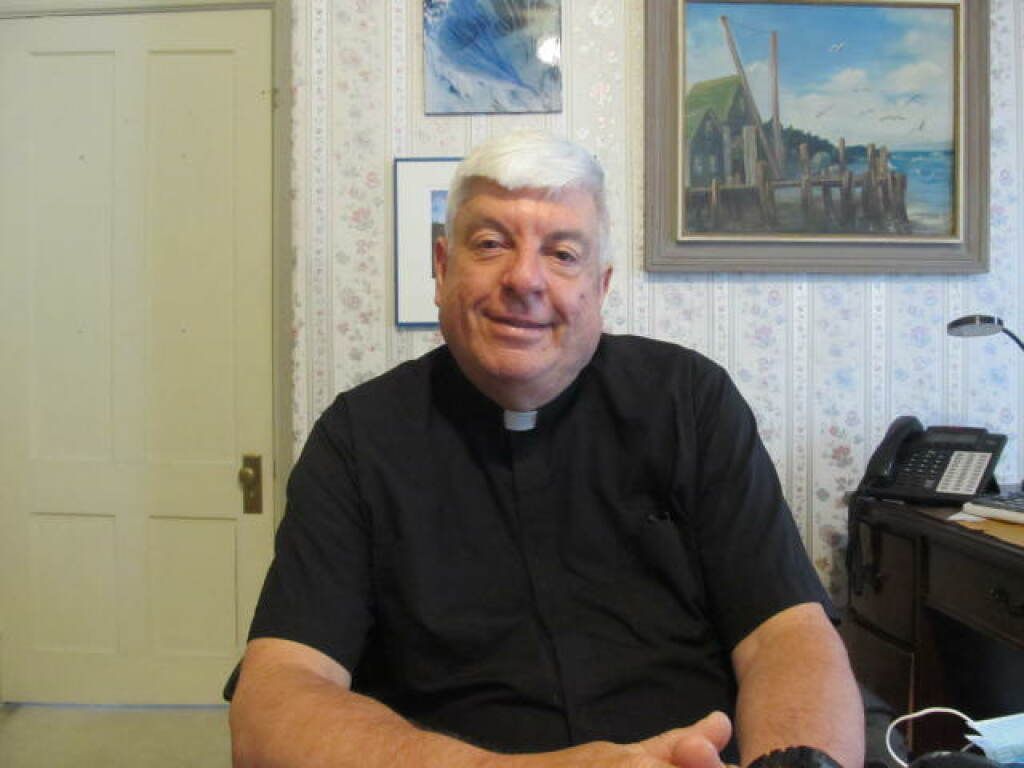 Taking a look at the two “bibles”
Taking a look at the two “bibles”
Spiritual writers down through the centuries have observed that we have, in effect, two “bibles”—two distinct ways in which God is revealed to us. Of course, the Scriptures make up the Bible we know and love. But long before the written Word, God is revealed in what God has done in creation. All you have to do is know how to look. That’s what I’d like to explore today in light of today’s gospel.
There’s a particular rose bush in our rose gardens that I find fascinating. When the bud appears, it’s a little, tiny thing, about a quarter of a fingernail. But then it opens and opens, and has so many layers of petals that it actually looks crowded. And I wonder how on earth does that happen? Are all those layers somehow there in the bud, in miniature? I suppose that botanists probably have figured out that there’s some kind of rose DNA that has it all mapped out, and all the rosebush has to do is follow the map! But to me, it’s still a wonder. And I think that’s why I enjoy working in the gardens so much: they are just full of wonder and they make me feel like Adam and Eve must have felt when they were given the super-perfect garden called Eden to live in. When I stop long enough to smell the roses, to really take note of what’s happening, I feel connected to the Creator of it all—a very awesome God.
The gift of wonder and awe is considered one of the ways in which we can come to a powerful sense of the presence of God. In addition to working in the garden, astronomy is another pathway in which I have gazed in awe at creation. Consider: it takes a little over eight minutes for the light of the sun to travel to the earth at 186,000 miles per second. The light traveling at that same speed from the next nearest star takes 4 ½ years to get here! I googled “how many stars are there in the Milky Way galaxy”. Try it. The answer I got was 400 billion! How do you even begin to deal with a number like that?
In a recent newspaper article there was a story about astronomers who are studying super-bright bursts of energy from gamma rays (different than x-rays). According to the article, a ten-second burst of these gamma rays releases more energy than the sun would release in ten billion years! The God of creation simply becomes more awesome the more I learn from the science that studies the cosmos.
Jesus’ teaching in today’s gospel, I believe, falls into a similar category. He’s talking to every-day people about something that was very familiar to them. How does a little seed turn into a plant, or a bush, or a huge tree? In our day, scientists study these things and come up with explanations or hypotheses about how they work. But does that really take away from the wonder and awe that you can feel in the presence of the “miracle” of that kind of growth?
Many parents will tell you that they feel this kind of reverent awe at the birth of their child. I often speak about the awesome mathematics involved in that birth: 1 + 1 = 3! It’s like a window opening to heaven, giving us a hint that points to God. The power of human beings to create a new human being is the closest we humans come to the creative power of God.
One of the Psalms, Psalm 19, speaks of creation’s power to reveal. It begins, “The heavens declare the glory of God, and the firmament proclaims his handiwork.”
Now, to get to the point of today’s Scripture. Jesus’ teaching in today’s gospel are meant to reassure his followers that God is at work in their lives. Particularly in dark or challenging times, when we may feel small or insignificant or overlooked, like a tiny mustard seed, that is precisely when we need to trust in God, who works mysteriously but lovingly for our good. We cannot understand fully the processes of growth in nature, or the powerful forces present in our universe, but they nonetheless point to an awesome God with incredible creative power who loves us beyond our ability to imagine. Jesus taught often that, in the face of adversity, fear is useless; what is needed is trust.
Finally, consider the beautiful cycle of nature that, if you look closely, has a revelatory power. Each winter, the trees all around us look “dead”—having been stripped of their foliage. But each spring new life buds forth once again. It is our faith that something similar happened with Jesus. On Good Friday he was, indeed, dead. But on Easter, life exploded, and Jesus lives, never to die again. The mystery of life and death throughout creation points to the Mystery of life that never ends. Thus, the two “bibles” mesh, revealing the incredible, powerful love of God.
You might also like
Father's Homilies




